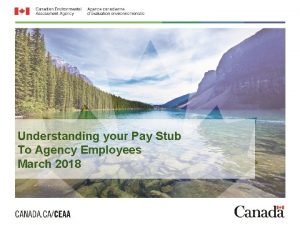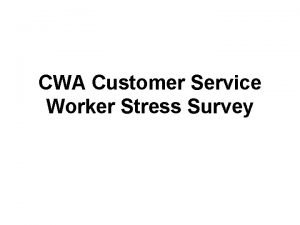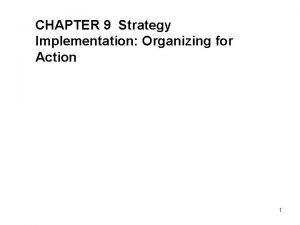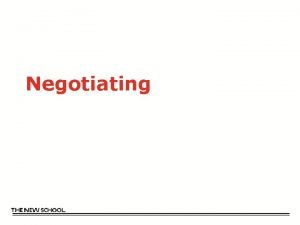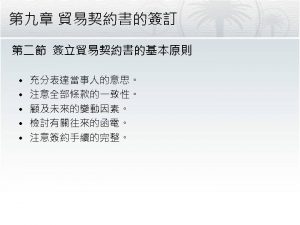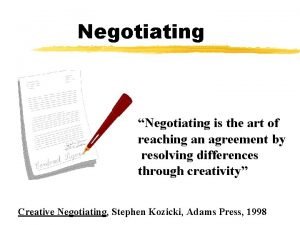Union Perspective on Negotiating Sales Commission Plans CWA







- Slides: 7

Union Perspective on Negotiating Sales Commission Plans CWA Cingular Bargaining Council November 14 -16, 2004 Washington, DC 1

Union Principles for Sales Commission Plans • Plan must benefit all stakeholders—employer, employee, and customer • Plan must be based on ethical sales practices • Plan must not undermine Union’s ability to represent members • Quotas must be set at levels that allow employees to succeed and must be based on sales opportunity • Plan should incent sales – not discipline for failure to meet quotas • Plan must reward excellent customer service • Plan should be simple, understandable, and based on accurate sales tracking systems 2

Negotiating Sales Commission Plans Issues to Consider • Plan Design - Options o Piece rate: pay-out for each unit sold; may have minimum threshold before pay-out o Quota: pay-out based on % attainment to goal • Components & Weighting o Revenue, Product, Quality • How quotas are set • Measurement at team or individual level 3

Negotiating Sales Commission Plans Additional Issues to Consider • Adjustments for time not worked • Union oversight committee • Changes in plan design/quotas • Impact on discipline/appraisal • Impact on compensation • Ramp-up period for new employees & new locations • Adjustments when add'l staff added to store • Treatment of charge-backs • Adjustments when inventory not in store 4

Sales Quotas Adjustments for Time Not Worked • Time on union business • Vacations, holidays, personal days off • FMLA-certified absence • Illness and disability • Other contractual time off • Non-sales time: training, meetings, etc. • Other 5

Service-Profit Chain Employee Retention Internal Service Quality Employee Satisfaction Employee Productivity • workplace design • job design • employee selection & retention • employee rewards & recognition • tools for serving customers 6 Revenue Growth External Service Value Customer Satisfaction • results for customers Customer Loyalty Profitability • retention • repeat business • referral Source: Harvard Business Review, March/April 1994

The Service-Profit Chain • The links in the chain – Profit and growth are stimulated primarily by customer loyalty. – Loyalty is a direct result of customer satisfaction. – Satisfaction is largely influenced by the value of services provided to customers. – Value is created by satisfied, loyal, and productive employees. – Employee satisfaction, in turn, results primarily from highquality support services and policies that enable employees to deliver results to customers. 7
